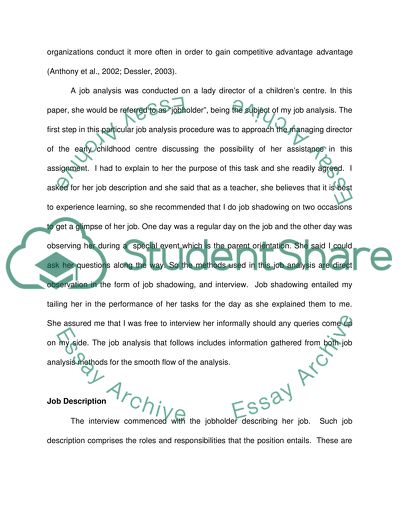Cite this document
(“Job analysis 2 Essay Example | Topics and Well Written Essays - 2000 words”, n.d.)
Retrieved from https://studentshare.org/environmental-studies/1416675-job-analysis
Retrieved from https://studentshare.org/environmental-studies/1416675-job-analysis
(Job Analysis 2 Essay Example | Topics and Well Written Essays - 2000 Words)
https://studentshare.org/environmental-studies/1416675-job-analysis.
https://studentshare.org/environmental-studies/1416675-job-analysis.
“Job Analysis 2 Essay Example | Topics and Well Written Essays - 2000 Words”, n.d. https://studentshare.org/environmental-studies/1416675-job-analysis.


